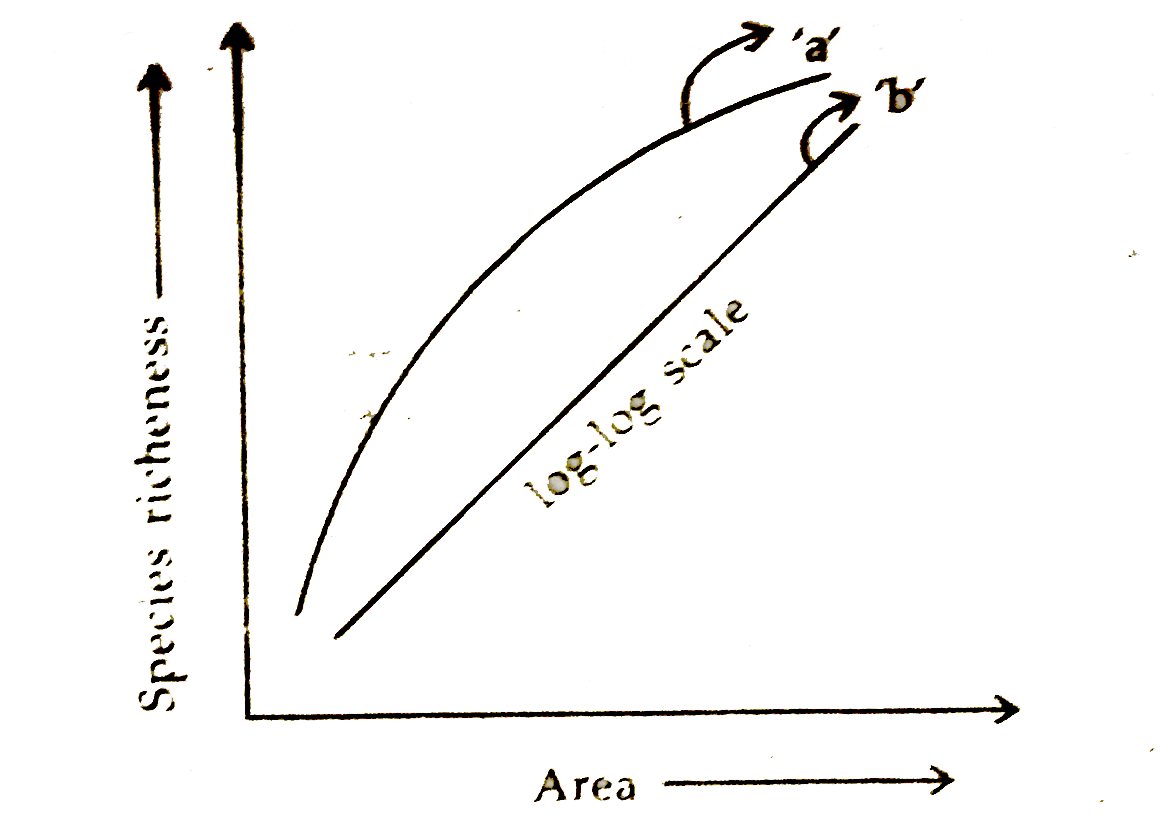Species - Area Relationship
Step by step video & image solution for Species - Area Relationship by Biology experts to help you in doubts & scoring excellent marks in Class 12 exams.
Updated on:21/07/2023Topper's Solved these Questions
- BIODIVERSITY AND ITS CONSERVATIONBOOK - ICSECHAPTER - BIODIVERSITY AND ITS CONSERVATIONEXERCISE - PRACTICE QUESTIONS (LONG ANSWER TYPE QUESTIONS)
5 Videos
- BIODIVERSITY AND ITS CONSERVATIONBOOK - ICSECHAPTER - BIODIVERSITY AND ITS CONSERVATIONEXERCISE - PREVIOUS YEARS. BOARD PAPER QUESTIONS (VERY SHORT ANSWER TYPE QUESTIONS)
3 Videos
- BIODIVERSITY AND ITS CONSERVATIONBOOK - ICSECHAPTER - BIODIVERSITY AND ITS CONSERVATIONEXERCISE - PRACTICE QUESTIONS (SHORT ANSWER TYPE-I QUESTIONS)
4 Videos
- BIOLOGY -2017BOOK - ICSECHAPTER - BIOLOGY -2017EXERCISE - PART-II ( SECTION-C)
11 Videos
Similar Questions
Alexander von Humboldt is associated with
(a.) species - area relationship
(b.) log S = log C + z logA
(C.) Within a region , species richness increases with the increasing limited explored area.
(d.) Increased diversity contributes to higher productivity.
(e.) Species diversity increases with the loss of keystone species.
View SolutionMatch the items in Column-I with those in Column-II and choose the correct option from the codes given below:
Column-IColumn-II(a)Ecosystem Experiments (i)Norman Myers(b)Species-Area relationships(ii)Alexander von Humboldt(c)Biodiversity hotspots(iii)Paul Ehrlich(d)Rivet Popper Hypothesis(iv)David Tilman
View Solution
Knowledge Check
On a logarithmic scale, the species area relationship is a straight line described by the equation log S = log C + Z log A.
What does S, C, Z and A represent in the given equation? Select the correct answer from the codes given below.
Species richness=1Slope of the line=2Y-intercept=3Area=4
a) 1 2 3 4
C S Z A
b) 1 2 3 4
S Z C A
c) 1 2 3 4
Z S C A
d) 1 2 3 4
A C S ZAa) 1234CSZABb) 1234SZCACc) 1234ZSCADd) 1234ACSZIntroduction of alien species into new area poses a threat to extinction of indigenous species due to
(a) their high nutrient requirement
(b) their symbiotic relationship
(c) absence of their natural predators
(d) more intraspecific competition.Atheir high nutrient requirementBtheir symbiotic relationshipCabsence of their natural predatorsDmore intraspecific competition.
Match column I with column II and select the correct option from the given codes.
Column IColumn IIA) Rivet Popper hypothesis(i)Paul EhrlichB) Long-term ecosystem <br> experiments using outdoor plots(ii)David TilmanC) Species-area relationships(iii)Alexander von <br> Humboldt
(a) A-(iii), B-(i), C-(ii)
(b) A-(i), (ii), C-(iii)
(c) A-(i), B-(iii), C-(ii)
(d) A-(ii), B-(iii), C-(i)
View SolutionFill in the blanks with suitable words in following statements.
(i) Colombia located near the equator has about…….. Species of birds.
(ii) More than 1,25,000 species of………. have been reported in Aamzonian rain forest.
(iii) Favourable and less seasonal enviroments has helped.............organism to gain more niche specialisation.
(iv) Value of slope of regression (Z) of species-area relationship lies in the range of............molluscs in New York state.
View SolutionThe following graph shows the species area relationship. Answers the Questions as directed.
(a) Name the naturalist who studied the kind of relationship shown in the graph.
Write the observations made by him.
(b) Write the situations as discovered by the ecologists when the value of 'Z' (slope of the line) lies between
(i) 0.1 and 0.2, (ii) 0.6 and 1.2
What does 'Z' stand for ?
(c ) When would the slope of the line 'b' become steeper ?

View SolutionThe following graph shows the species area relationship. Answers the Questions as directed.
(a) Name the naturalist who studied the kind of relationship shown in the graph.
Write the observations made by him.
(b) Write the situations as discovered by the ecologists when the value of 'Z' (slope of the line) lies between
(i) 0.1 and 0.2, (ii) 0.6 and 1.2
What does 'Z' stand for ?
(c ) When would the slope of the line 'b' become steeper ?

View SolutionWhich one of the following plants shows a very close relationship with a species of moth, where none of the two can complete its life cycle without the other
View SolutionWhich one of the following plants shows a very close relationship with a species of moth, where none of the two can complete its life cycle without the other
View Solution
